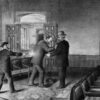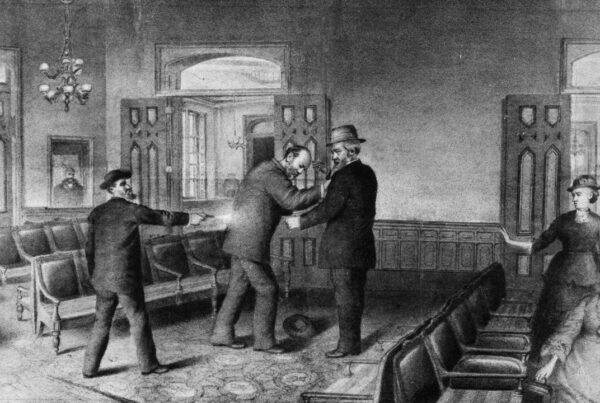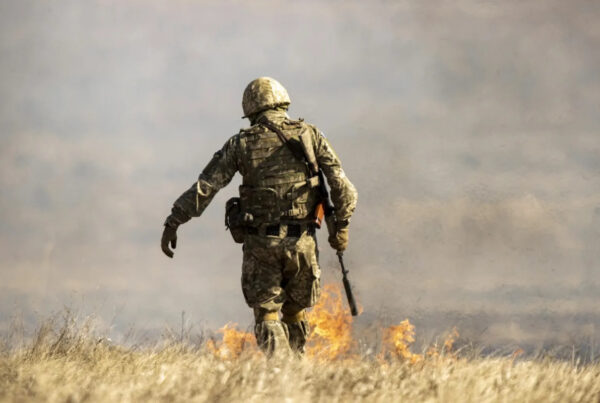In 2016, in response to US Homeland Security Department reports warning that carfentanil could be used as a weapon of mass destruction (WMD), Public Safety Minister Ralph Goodale said that while the federal government monitored all possible threats, that there was no evidence that carfentanil would be used as a terrorist weapon on Canadian soil. Perhaps it is timely to re-examine this viewpoint as Canadian lives depend on understanding the dangers of this drug.
Carfentanil is a commercially available, synthetic opioid, used as a large animal sedative for elephants and like sized animals. Of great concern, however, is the fact that it is increasingly finding a presence on Canadian streets as the street drug of choice for Canada’s youth. It is killing them in epidemic numbers and has sparked what the Federal government calls a “national public health crisis.”
Carfentanil is 100 times more powerful than fentanyl; 20 micrograms will kill a person; one kilogram is enough to produce 50,000 lethal doses and many more non-lethal, but very dangerous doses. There are many stories of Canadian youth taking carfentanil for the first, and the last time, as one dose can be deadly. Carfentanil and fentanyl are so dangerous, that the federal government was forced to create a joint action plan in 2016 with its provincial partners and stakeholder groups. The Ontario government started issuing Naloxone kits at pharmacies for free, and St. John Ambulance Canada in cities including the nation’s capital started working in cooperation with organizations like Ottawa Public Health to combat the crisis.
Needless to say, more must be done to prevent carfentanil from entering the country through foreign manufacturers like China, and much more needs to be done by all levels of government to keep it off our streets, out of the hands of youth, and to severely punish those that push this deadly drug.
In a recent, very worrying revelation about carfentanil’s potential use as a WMD, the older brother of Faisal Hussain, the Danforth shooter, was caught with the largest haul of carfentanil in Canadian history and many illegal firearms. Fahad Hussain, the older brother, an alleged drug dealer, remains in hospital suffering from a drug overdose, was charged in September 2017 with possession of more than 17-kilograms of carfentanil found at his residence. That is enough to provide lethal doses to over half of the population of Toronto or provide every Toronto resident with at least one ‘feel good,’ possibly non-lethal dose. That is a very large drug inventory for even the biggest of dealers—the largest in Canadian history.
The nexus between criminal activity and Islamic State (ISIS)-inspired and directed terrorism is well-known. ISIS claimed Faisal Hussain as one of its own. In the views of more than one expert on terrorism, there are many unanswered questions that remain about the motivations of Faisal Hussain including whether he was linked to the CN Tower/Rogers Centre threat that same week, and whether he was an agent of ISIS.
While Fahad Hussain’s possession of so many kilograms of carfentanil was determined by police as meant for wholesale trafficking, the possibility that it was amassed for a potential terror attack and all that entails cannot and should not be ignored. The big question in light of subsequent events is whether authorities in September 2017 ever included or considered the possibility of terrorism as part of their investigation, and if not, why not?
Keep in mind, that in October 2002, Russian Spetsnaz introduced aerosolized carfentanil into Moscow’s Beslan Theatre to end a Chechen hostage taking attack with 800 hostages held in the balance. The weaponized carfentanil was so strong as to incapacitate and kill between 120 and 204 innocent civilians.
Terrorists have showed repeatedly that they can manufacture, weaponize and deploy chemical weapons as weapons of mass destruction starting with Aum Shinrikyo cult in 1995. In 1995, Aum Shinrikyo carried out a sarin nerve gas attack on Tokyo subway system with crude dispersal devices. The sarin attack killed 13 people and injured thousands of others. Aum Shinrikyo also stands accused of an earlier, lesser known, sarin attack that killed eight and injured 600 people.
Since then, al-Qaeda (AQ) and ISIS and have experimented with, manufactured, and used chemical weapons in attacks. ISIS has been accused of carrying out several attacks with chemical weapons in Syria and Iraq with chlorine and mustard gas. Furthermore, it should be noted that in 1984, a little-known cult, the Rajneeshee carried out a bioterror attack that sickened 751 individuals in The Dalles, Oregon, by the purposeful contamination of salad bars at ten local restaurants with salmonella.
History has shown that if a terrorist group has access to money through criminal activities such as those linked to drugs, technical expertise, and time, they can readily produce both chemical and biological agents for terrorist attacks. Well documented international police reports demonstrated the ISIS terrorists have no moral qualms about selling narcotics to non-Muslims.
In summary, carfentanil is readily available, relatively easy to weaponize, even in a crude fashion, and could kill large numbers of exposed unprotected civilians in an enclosed area. Just as the nexus between criminality and ISIS terrorism is a national security concern at the policy level, horrendous events on the street should be examined carefully in terms of national security. As the old saying goes ‘once is an incident, twice is a coincidence, three times would be…..’








